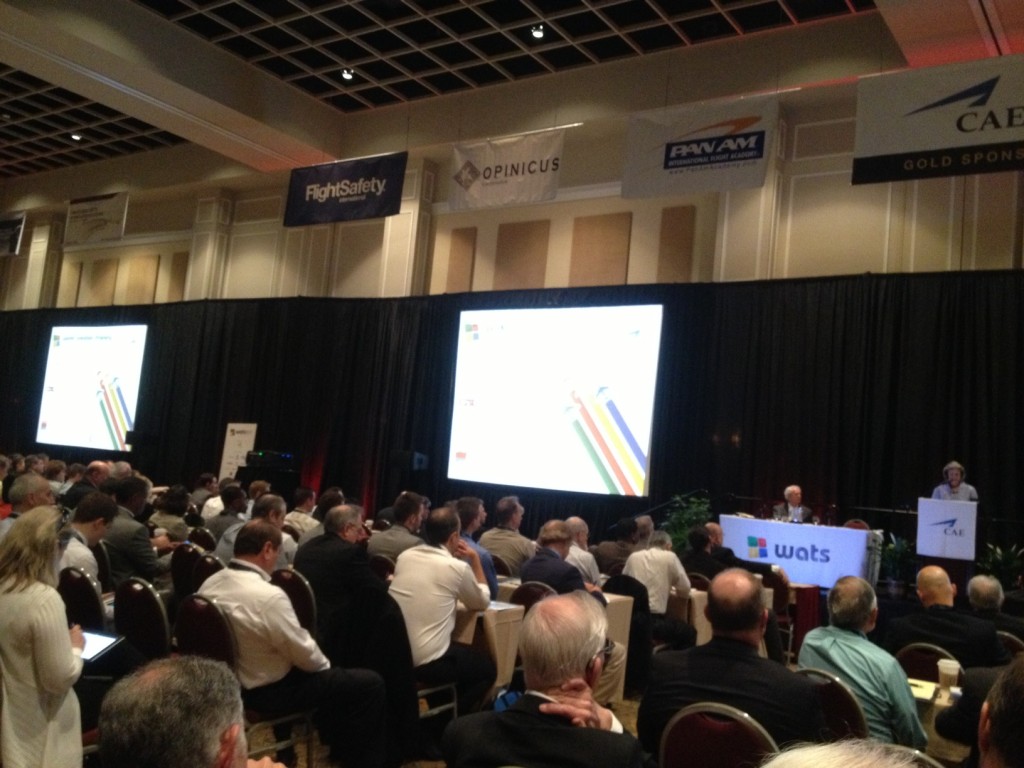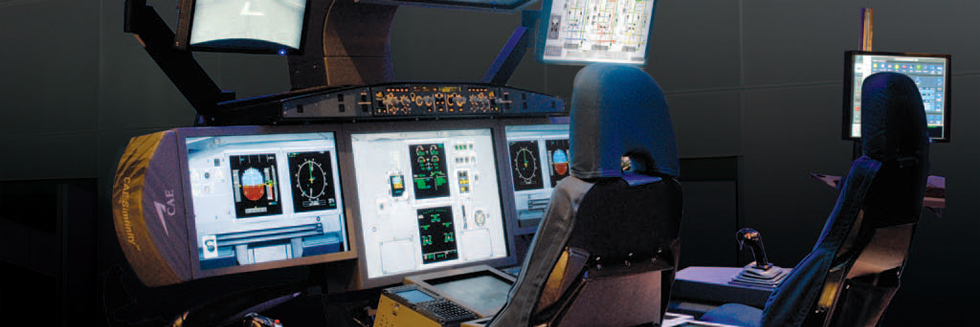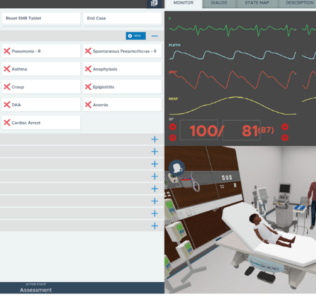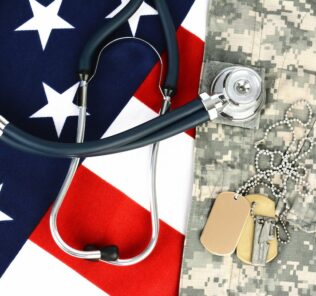WATS Aviation Simulation Conference Demonstrates the Potential to Healthcare
Recently I was invited to Halldale Media‘s 2013 World Aviation Training Conference and Expo event took place in Orlando, Florida with over 1,000 pilots, flight attendants, mechanics, students and vendors in attendance. I have produced what I consider to be a ‘must-view’ video and article covering the event, which more than demonstrated the parallels between aviation simulation training and healthcare simulation training.
Being the first simulation training conference I have attended outside of the healthcare sector, I was very impressed to witness an industry which has wholeheartedly accepted simulation. Absent from the event were sessions dedicated to convincing users about the need to invest in simulation training programs. Instead, keynote speakers addressed the latest data findings pointing to unexplored training gaps such as lithium-ion laptop battery fires and auto-pilot engaged high-altitude stall recovery protocol changes.
Sponsored Content:
Watch the video above and view the rest of this must-read article below!
Leading industry Airbus consultant Captain Jacques Drappier explains why the aviation industry’s use of simulation is just so evolved.
“In the 50s and 60s the pilot that were there had never seen simulation. Because simulation wasn’t too good, pilots rejected it. The younger generation of new pilots like myself who started in the 70s, we grew up with that simulation already and accepted it for what it was and built on from there. So over time, the pilots more and more accepted the limitations of the simulation but also saw the benefits of it, being able to make mistakes, discuss it afterwords and do it again – which is impossible in an airplane because the instructors know that the risks of killing anybody or breaking the machine are too big.”
Sponsored Content:
While it was easy to understand why continental and regional pilots discussed their latest training procedures in different tracks, I was surprised to learn of the degree that simulation has also been adopted by flight cabin crews and plane maintenance and repair mechanics. Covering the flight attendant sessions, I saw how educators utilized quality assurance programs and data-driven performance reviews to increase oxygen administration training outcomes. Interestingly, while sales and marketing strategies remain airline corporate secrets not discussed at the meeting, safety issues and training tactics were more than shown to be an open dialog across industry competitors.
Jessica Henline, InFlight Training Supervisor, from SkyWest Airlines explains how simulation is utilized in cabin crew training and why the success of airline safety training is such an industry-wide concern:
“We definitely do a lot of simulation in training. In new hire training it provides the new hires a better feel for to what expect when they are flying the line, and in in continual qualification its the same thing – because its just so much more realistic. Simulation helps the flight attendant focus on the role they are training for, instead of trying to focus on the role they are playing because the environment is so realistic. Many years ago we just used chairs to mimic the cabin and role-played everything, but a few years ago we had static trainers built which have the same width and length as an actual aircraft, just shorter in length, but with actual airline seats and emergency equipment so its very very realistic.
When it comes to airline safety we want the entire industry to be safe because if something negative happens to one airline that can literately impact all airlines. We don’t really share things that have to do with marketing or business plans, but when it comes to safety many competitors are open to sharing.”
Watch Jessica’s full interview below:
In the mechanic-based sessions I saw further parallels to the healthcare simulation industry as presenters covered standard operating procedures and the types of equipment their training spaces utilized. One mechanical educator from Bell Helicopters reminded us why airline manufacturers remain in such support of advanced training platforms: “We know that if we sold an aircraft to someone who has a dangerous event or accident, that we won’t be in business anymore, and so Larry Bell was very smart about this and in 1946 the Bell Training Academy was established.”
In the WATS exhibit hall, a variety of the latest training technologies and support companies were on display. Tabling were major manufacturer training providers, pilot part-task trainers and computer-based trainers, online courseware and learning management systems, maintenance personnel real-time schematic trainers, flight attendant trainers, high-resolution projector systems, private flight training companies and of course, one of the worlds leading global simulation companies: CAE.
Not only does Canadian-based CAE provide healthcare training solutions but aviation, mining and military simulation products as well. I spoke with Pascal Richer, Simfinity Technical Leader from CAE Montreal, about the advancement of simulation technology with aviation, and the CAE SimFinity Airbus 320 Trainer:
“Fifteen years the only possible way to train pilots other than in the airplane was with expensive full-flight simulators. These days, with the advance of computing power, it is now possible to have a fully immersed training device simply running off a single desktop. Today we are showing today is the SimFinity, an Integrated Procedures Trainer (IPT) Airbus 320. What you are seeing here are a series of lcd touch-screens, so that the student can interact directly with the simulation graphics. All of these screens are linked together in simulation so that when the student goes and performs a procedure they have the same reaction as they would in the full-flight and in the actual airplane.
To enhance the training, we have added tactical panels, which have the touch and feel of the real aircraft so that the students get used to touching the buttons. What’s important about these devices is that they have the same aspect ratio as the actual aircraft so that the students build muscle memory so that the students learn where the panel is before their eyes can get to it.
We also utilize ‘active schematics’ which are linked to the simulation, so that again whenever any action that takes place in the cockpit you can see exactly what happens to the different systems.
Any airline manufacturer that produces new aircraft wants to have simulations of their aircraft before the planes are delivered because airlines want to have trained pilots as soon as they received the new aircraft. Simulators, therefore, must be up and running before the actual aircraft is delivered to the launch customer.”
Watch Pascal’s full interview below:
I also spoke with Lee Whittaker, Technical Publications Manager from EDM, which recently launched the SEPTRE cabin crew hydraulic motion and visual training platform. This system has been sold to airline companies from around the world to provide more realistic cabin crew training during normal and emergency situations. Watch the video to notice the direct similarities with the scenario timeline manipulation.
While a thousand pilots, flight attendants and mechanics continued with sessions throughout the three days, a cohort of recent PANAM Flight training Academy graduates were provided an opportunity to tour the exhibit hall. Newly licensed pilot Walter Amerling from Costa Rica explained the benefits of simulation during his education.
“Once you get into an airplane you have to deal with wind conditions and clouds, and the air traffic controller. So, flying in a simulator first you can get to know the systems and procedures and afterwords get into a plane and deal with the uncontrollable variables like weather – which I think is good because its harder to fly the airplane. You don’t want to get into a situation unprepared and not know how to handle it, so I think its good to practice these things in a simulator that you wouldn’t normally encounter in an airplane normally – and its safer since your feet are on the ground.”
Watch Walter’s full interview below:
Returning to the Halldale Civil Aviation Training magazine booth again I asked Captain Drappier what advice he had for for those of us within healthcare who looking to get serious training outcomes from simulation.
“Of course you buy the simulator which costs say $10 million, but then you need the complete staff. You need to have a facilities to host the simulator, you need to have special technicians to run the simulator. The simulator is of course, a tool, meaning the instructors. So you need to have good programs. Simulation is perfect in terms of education, if it is done well. If you are going to use the simulator in the wrong way, you can be doing negative training. Its very important that the training syllabi are well prepared and thought-through and have been tested before used on trainees. Instructors need to be standardized, to know the limitations of the simulation, how far they can go. So, simulators can be a dangerous tool as well, from a mental state you can really break a pilot or build one. So its very important that the whole simulation environment is well prepared, because its not just a simulator – it’s a total package that needs to be ready.”
Watch Capt. Drappier’s full interview below:
After seeing an industry which has had a 50 year headstart with simulation at WATS 2013, there is no longer any doubt in my mind that in the very near future simulation will permanently become a leading training methodology within healthcare.
Especially since we have the benefit of aviation’s history, which has shown where training with simulations can take us.
To stay up-to-date, subscribe to HealthySimulation’s free email newsletter and visit Halldale.com.
Lance Baily, BA, EMT-B, is the Founder / CEO of HealthySimulation.com, which he started in 2010 while serving as the Director of the Nevada System of Higher Education’s Clinical Simulation Center of Las Vegas. Lance also founded SimGHOSTS.org, the world’s only non-profit organization dedicated to supporting professionals operating healthcare simulation technologies. His co-edited Book: “Comprehensive Healthcare Simulation: Operations, Technology, and Innovative Practice” is cited as a key source for professional certification in the industry. Lance’s background also includes serving as a Simulation Technology Specialist for the LA Community College District, EMS fire fighting, Hollywood movie production, rescue diving, and global travel. He and his wife live with their two brilliant daughters and one crazy dachshund in Las Vegas, Nevada.
Sponsored Content:




















